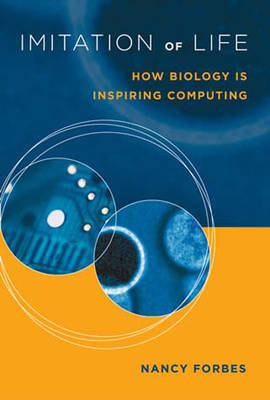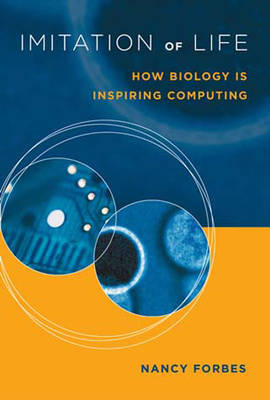
- Retrait gratuit dans votre magasin Club
- 7.000.000 titres dans notre catalogue
- Payer en toute sécurité
- Toujours un magasin près de chez vous
- Retrait gratuit dans votre magasin Club
- 7.000.000 titres dans notre catalogue
- Payer en toute sécurité
- Toujours un magasin près de chez vous
Description
As computers and the tasks they perform become increasingly complex, researchers are looking to nature--as model and as metaphor--for inspiration. The organization and behavior of biological organisms present scientists with an invitation to reinvent computing for the complex tasks of the future. In Imitation of Life, Nancy Forbes surveys the emerging field of biologically inspired computing, looking at some of the most impressive and influential examples of this fertile synergy.
Forbes points out that the influence of biology on computing goes back to the early days of computer science--John von Neumann, the architect of the first digital computer, used the human brain as the model for his design. Inspired by von Neumann and other early visionaries, as well as by her work on the "Ultrascale Computing" project at the Defense Advanced Research Projects Agency (DARPA), Forbes describes the exciting potential of these revolutionary new technologies. She identifies three strains of biologically inspired computing: the use of biology as a metaphor or inspiration for the development of algorithms; the construction of information processing systems that use biological materials or are modeled on biological processes, or both; and the effort to understand how biological organisms "compute," or process information.
Forbes then shows us how current researchers are using these approaches. In successive chapters, she looks at artificial neural networks; evolutionary and genetic algorithms, which search for the "fittest" among a generation of solutions; cellular automata; artificial life--not just a simulation, but "alive" in the internal ecosystem of the computer; DNA computation, which uses the encoding capability of DNA to devise algorithms; self-assembly and its potential use in nanotechnology; amorphous computing, modeled on the kind of cooperation seen in a colony of cells or a swarm of bees; computer immune systems; bio-hardware and how bioelectronics compares to silicon; and the "computational" properties of cells.
Spécifications
Parties prenantes
- Auteur(s) :
- Editeur:
Contenu
- Nombre de pages :
- 190
- Langue:
- Anglais
- Collection :
Caractéristiques
- EAN:
- 9780262562157
- Date de parution :
- 23-09-05
- Format:
- Livre broché
- Format numérique:
- Trade paperback (VS)
- Dimensions :
- 154 mm x 227 mm
- Poids :
- 290 g







